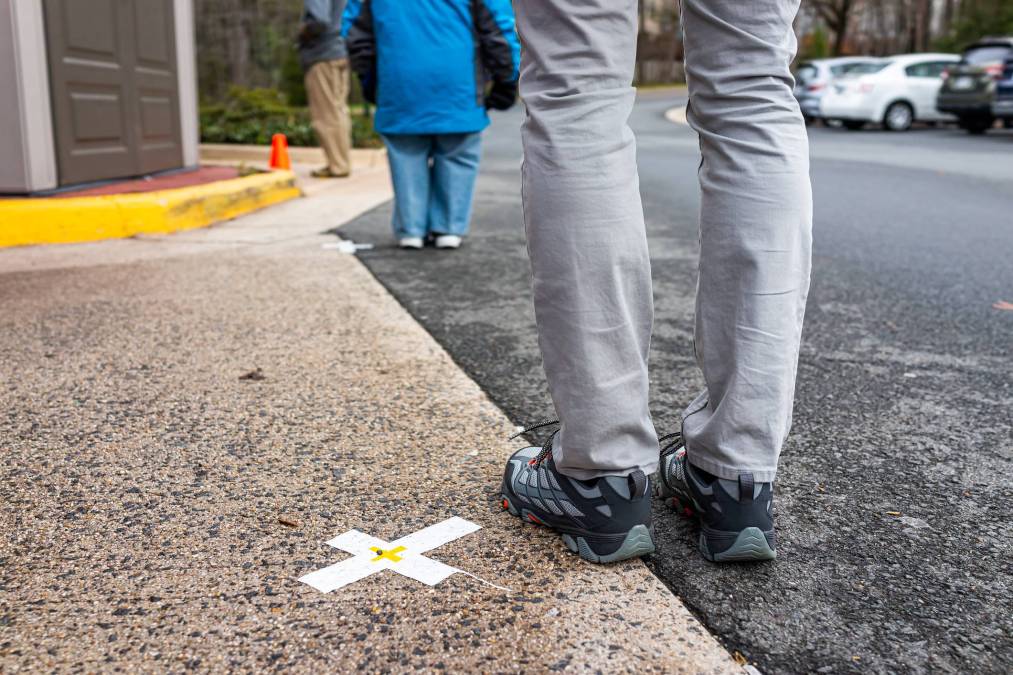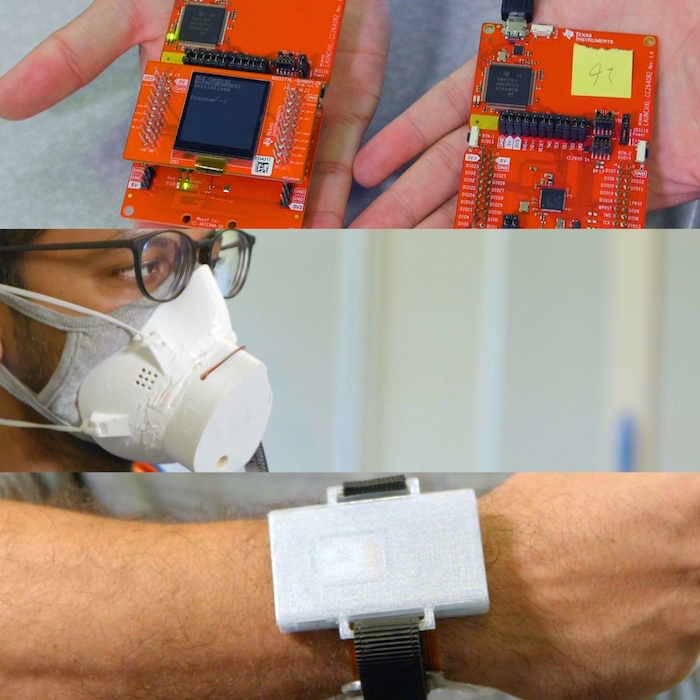This wristband vibrates if you break social distancing rules

Students and professors at the University of Florida have developed three new wearable devices to help monitor, detect and mitigate COVID-19, including a wristband that vibrates if someone gets too close.
Announced by the university on Monday, the gadgets also include a face mask that reduces the amount of virus in the air and another wristband that continuously monitors user temperature to detect possible COVID-19 infection. The devices were invented to help collect critical health data that can be used to alert wearers of potential exposure or infection, University of Florida professor Swarup Bhunia told EdScoop.
The face mask, called the ADAPT smart mask, can protect wearers from contracting COVID-19 better than a traditional mask, Bhunia said, thanks to several unique features. He said the mask reduces the amount of virus in the air through the use of a sensor, which detects virus particles, spurring the release of a water mist that blows some virus-laden droplets away and causes some particles to fall to the ground. The mask also sends alerts to the wearer’s smart phone, including on when to recharge or decontaminate the mask.
Another device, called the TRIDENT smart band, monitors wearers’ temperature to detect possible infection before the individual even knows they are sick, Bhunia said. Early indicators of a COVID-19 infection are often missed by sporadic temperature checks, he said, but by using a device that continuously monitors temperature can make it easier to spot infection. The wristband works by actively monitoring activity, ambient temperature and body temperature to alert the wearer though their smartphone of potential infection so they can get tested and avoid spreading the disease.

Devices designed by teams at the University of Florida are hoped to improve public health during the coronavirus pandemic. (University of Florida)
Another wristband, called RiskBand, uses Bluetooth signal strength to alert the wearer if they are coming too close to another individual. A light vibration reminds the wearer to maintain social distancing. The wristband also generates a log of who the user has come into contact with and at what time of day, which can assist in contact tracing to help mitigate the spread of COVID-19, Bhunia said.
All of these prototypes are now fully functional, Bhunia said, but now the goal is to make them smaller and develop them into a final product for people to begin using.
Devices like these, sometimes called “internet of things” devices, have a significant roll to play in protecting people during the pandemic, he said, and will be critically important to protect students who are returning to campus for in-person classes, as well as for health care workers.
“[The pandemic] is a major problem. It has upended out lives,” Bhunia said. “But at the same time it’s an opportunity.”
He pointed to the students and researchers, like those who worked on these projects, who’ve been able to exercise their skills and creativity to develop solutions that keep people safe during the pandemic.




